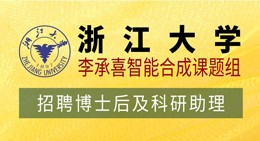Molecular Diversity ( IF 3.9 ) Pub Date : 2021-06-24 , DOI: 10.1007/s11030-021-10258-8
Parameshwara Chary Jilloju 1 , Leentje Persoons 2 , Sathish Kumar Kurapati 3, 4 , Dominique Schols 2 , Steven De Jonghe 2 , Dirk Daelemans 2 , Rajeswar Rao Vedula 1
|
|
A new series of ( ±)-(3-(3,5-dimethyl-1H-pyrazol-1-yl)-6-phenyl-6,7-dihydro-5H-[1,2,4]triazolo[3,4-b][1,3,4]thiadiazin-7-yl)(phenyl)methanones were efficiently synthesized starting from 4-amino-5-hydrazinyl-4H-1,2,4-triazole-3-thiol 1, acetyl acetone 2, various aromatic and heterocyclic aldehydes 3 and phenacyl bromides 4. All the newly synthesized compounds were tested for their antiviral and antitumoral activity. It was shown that subtle structural variations on the phenyl moiety allowed to tune biological properties toward antiviral or antitumoral activity. Mode-of-action studies revealed that the antitumoral activity was due to inhibition of tubulin polymerization.
Graphic abstract
中文翻译:

(±)-3-(1 H-pyrazol-1-yl)-6,7-dihydro-5 H-[1,2,4]三唑并[3,4-b][1,3,4]的发现具有良好的体外抗冠状病毒和抗肿瘤活性的噻二嗪衍生物
(±)-(3-(3,5-dimethyl-1 H -pyrazol-1-yl)-6-phenyl-6,7-dihydro-5 H- [1,2,4]triazolo[以 4-amino-5-hydrazinyl-4 H -1,2,4-triazole-3-thiol为原料高效合成3,4- b ][1,3,4]thiadiazin-7-yl)(phenyl)methanones 1,乙酰丙酮 2,各种芳香和杂环醛 3 和苯酰溴 4。所有新合成的化合物都进行了抗病毒和抗肿瘤活性测试。结果表明,苯基部分的细微结构变化可以将生物学特性调整为抗病毒或抗肿瘤活性。作用模式研究表明,抗肿瘤活性是由于抑制微管蛋白聚合。

































 京公网安备 11010802027423号
京公网安备 11010802027423号